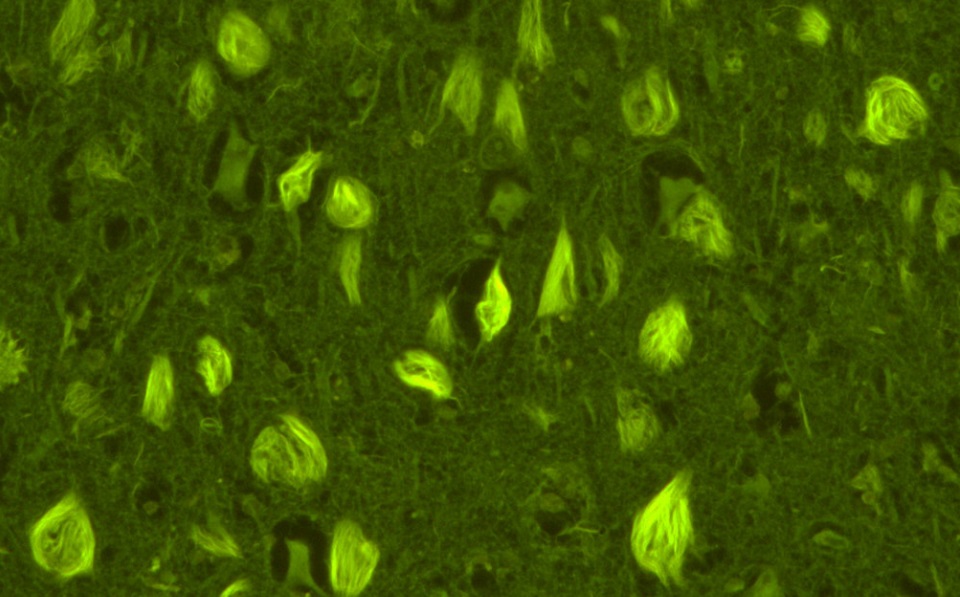
Neurodegenerative disorders (Alzheimer’s) lay summaries
- BRAIN UK Ref: 25/013 – Do AN1792 trial patients still show ASC positive cores of former Abeta plaques?Alzheimer’s disease (AD) is the most common form of dementia, mainly affecting older people. As people in Western countries live longer, more AD cases are… Read more
- BRAIN UK Ref: 25/011 – Transcriptomics analysis of cerebral amyloid angiopathy-related inflammationAduhelm is a new treatment for Alzheimer’s disease that has been approved in the United States. This treatment involves immunotherapy against a protein that… Read more
- BRAIN UK Ref: 25/010 – Molecular analysis of brains of patients administered the AN1792 (Aβ42) vaccineAlzheimer’s disease is the commonest cause of dementia in later life, responsible for two thirds of cases. It affects about 5% of people over 65 years of age… Read more
- BRAIN UK Ref: 24/016 – Molecular characterisation of the consequence of anti-amyloid immunotherapy in Alzheimer’s disease brainAlzheimer’s disease (AD) is characterised by the accumulation of plaques (amyloid-β) in the brain. In recent years several clinical trials have used vaccination approaches… Read more
- BRAIN UK Ref: 23/024 – The multifaceted role of MMPs and TIMPs in Alzheimer’s disease after immunotherapyThe build-up of amyloid-β (Aβ) protein in the brain creates plaques, a major sign of Alzheimer’s disease (AD). This protein can also gather in blood vessel walls, causing… Read more
- BRAIN UK Ref: 23/022 – Understanding porphyromonas gingivalis infection in Alzheimer’s diseaseOur research will investigate the relationship between bacterial infection in the brain and Alzheimer’s disease associated with Down syndrome. More specifically, the research will focus on a bacterium that leads to… Read more
- BRAIN UK Ref: 23/017 – AN1792 immunotherapy effects on plaque-associated synapse loss and gliosisAlzheimer’s disease is the commonest cause of dementia in later life, responsible for two thirds of cases. It affects about 5% of people over 65 years of age, 20% of people over the age of 80 and 50% of people over… Read more
- BRAIN UK Ref: 22/022 -Investigating spontaneous CAA-related inflammation as a model for Aβ immunotherapy-induced side effects (ARIA)A new treatment for Alzheimer’s disease which involves immunotherapy against a protein that accumulates in the brain (Aβ) has recently been approved in the United States (Aduhelm). However, a side effect called… Read more
- BRAIN UK Ref: 22/012 – The neuropathological examination of patients administered the AN1792 (Aβ42) vaccineAlzheimer’s disease is the commonest cause of dementia in later life, responsible for two thirds of cases. It affects about 5% of people over 65 years of age, 20% of people over the age of 80 and 50% of people over 90 years… Read more
- BRAIN UK Ref: 21/024 – Entrapment of lipoprotein particles in the brain drives Alzheimer’s diseaseCholesterol is essential to the maintenance and function of the nerve cells. It is delivered to the cells via particles called lipoprotein. The space that the particles have to go through is a narrow cleft between… Read more
- BRAIN UK Ref: 21/023 – To understand the pathophysiology of Amyloid-Related Imaging Abnormalities (ARIA)A new treatment for Alzheimer’s disease has recently been approved in the United States (Aduhelm). However, there is a problem with a side effect… Read more
- BRAIN UK Ref: 20/015 – Cellular senescence in brain ageing and Alzheimer’s diseaseAs of today, there is no cure for Alzheimer´s disease, the most common cause of dementia. There is an urgent need to explore new avenues in order to find effective treatments. Here, we propose to study the influence of… Read more
- BRAIN UK Ref: 20/011 – The histopathology underlying Amyloid Related Imaging Abnormalities (ARIA) in Alzheimer’s DiseasePatients with Alzheimer’s disease that receive experimental treatment often develop abnormalities on brain scans. These abnormalities are known as ARIA, which stands for… Read more
- BRAIN UK Ref: 16/013 – Multi-species biofilm formation in senile plaques in Alzheimer’s disease: Contribution from oral bacteriaDuring the development of Alzheimer’s disease, proteins build up in the brain to form structures called ‘plaques’ and ‘tangles’. This leads to the loss of connections between nerve cells, and eventually to the death of nerve cells and loss of… Read more
- BRAIN UK Ref: 15/013 – Exploratory study: Use of MultiOmyx to investigate the pathology of Alzheimer’s diseaseAlzheimer’s disease is the commonest cause of dementia (failure of mental function with age). In the brain in Alzheimer’s disease there are many different abnormalities, affecting many different proteins. Understanding of how the… Read more
- BRAIN UK Ref: 14/013 – Functional characteristics of rare risk variants in TREM2 associated with Alzheimer’s diseasePerhaps the most exciting, recent finding in the genetics of Alzheimer’s disease (AD), has been the identification of rare changes in the TREM2 gene which increase vulnerability to AD. Evidence suggests… Read more
- BRAIN UK Ref: 14/003 – Studying the role of TUBA8 (tubulin alpha 8) in brain disordersAlzheimer’s disease (AD) is the most common type of dementia. The nerve cells are abnormal in this disease. Clumps of protein called tangles containing tau form inside the nerve cells and correlate with… Read more
- BRAIN UK Ref: 14/002 – Age-modified forms of amyloid-β in a Drosophila model of neurodegeneration and in the brain of Aβ immunised Alzheimer’s disease patientsAlzheimer’s disease (AD) is the commonest form of dementia, with ageing as the main risk factor. There are currently over 6 million people with dementia in the European Union (EU). The increasingly ageing population makes… Read more
- BRAIN UK Ref: 13/010 – Pilot study of cholesterol, lipids and LDL in Alzheimer’s diseaseThere are certain inherited genetic factors that influence the risk of a person getting Alzheimer’s disease. This tells us that the proteins produced by these genes must be important in this type… Read more
- BRAIN UK Ref: 13/001 – Are neurodegenerative diseases and gliomas inverse comorbidities?The study of the association of different diseases and how they influence each other has proved a promising venue to elucidate the mechanisms underlying several common conditions… Read more
- BRAIN UK Ref: 12/009 – Investigation into the impact of systemic inflammation due to infection on microglial phenotype and its contribution to Alzheimer’s disease neuropathologyWhen we have an infection we feel sick and uninterested in things. This is known as “sickness behaviour” and is transitory. Studies have shown that this occurs because certain brain cells… Read more
- BRAIN UK Ref: 11/007 – How do ageing processes contribute to Alzheimer’s disease?Alzheimer’s disease (AD) is the most common cause of dementia in the elderly and is associated with the accumulation of a particular molecule (called tau protein) in the central nervous system. The incidence of AD increases… Read more
